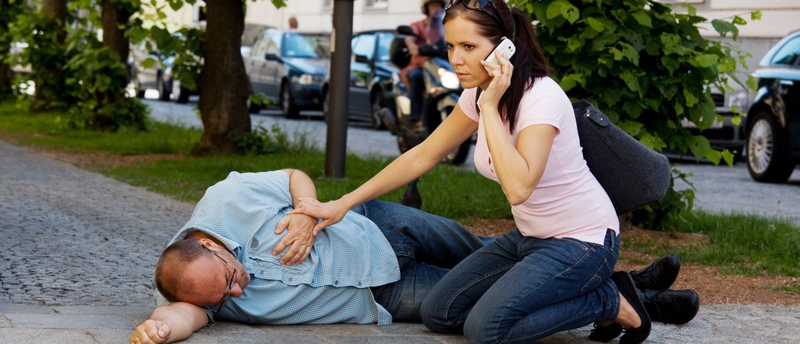Seizures are no laughing matter. The changes in behavior, involuntary movements, and lack of awareness with what’s going on around him may seem like a butt of jokes for some, but this is a serious condition. In case you haven’t seen someone went through seizure, you might be scared, shocked, worried, or confused. But what you do may help his/her a lot. So in case you see one, follow the steps below.

What to Do When Someone Has a Seizure
Place the person on the floor so he won’t fall.
A person having a seizure might tend to vomit. As much as possible, roll the person on the floor, preferably on the side to avoid further choking or inhaling of vomit. If you can, rolling him on the left side is better.
In case the person is acting violently, don’t restrain him. Just make sure you will get rid of any objects that could harm the person.
Check if the person is breathing.
Once you rolled the person on his side, the next thing you should do is to check if he is still breathing. In case you noticed that he has difficulty in breathing, check anything that could block the airway such as food.
You might be tempted to place a rolled handkerchief or fabric on his mouth to make sure he doesn’t bite his tongue. Don’t. It could further block their airway and worse, might be life-threatening.
Stop them from hurting themselves.
Another technique on what to do when someone has a seizure is to make sure he won’t hurt himself. A person having seizure might unintentionally hit his head against the floor, so make sure you place a pillow or any soft object under his head to avoid further damage.
What's more, pay attention to any constrictive clothing or accessories such as belt and necklace that could harm the person or cause strangulation. Move furniture, sharp items, and other possible obstructions to ensure safety of the person having seizure.
Look for ID card or medical jewelry.
Some people appear normal and healthy until they come face-to-face with their condition triggers. If you find yourself in a situation where someone is having seizure, look for his ID card or medical jewelry indicating his condition. You might also find information on how to handle seizures to enable you help the person better.
Monitor, don’t leave, and wait for the person until he becomes conscious.
A person suffering from seizure needs a good Samaritan. If you happen to walk by, extend a helping hand and bring the person somewhere more private. Surely, there will be lots of curious passersby who will constantly ask what happened. At this point, it is best to give the victim some privacy until he regains his consciousness because it could make the person feel embarrassed or confuse.
Once he regains his consciousness, make sure you follow the next tip on what to do when someone has a seizure.
Get to know the recovery position.
Here’s what you need to do, presuming that he is lying on his back:
With your palm facing up, put the arm closest to you at a right angle to his body.
Lift the arm across his body then put the back of his hand against his cheek.
Bend the leg farthest from you to make sure that his foot is flat on the floor.
With the help of the bent knee, pull the person towards you, thereby causing him to roll on your side. Keep your hand against his cheek and make sure that his leg is at the right angle to his body.
Write down details and everything you can remember when the person had seizure.
Whenever you have a chance, make sure to jot down everything that happened during the attack. This should include but not limited to length of the seizure, any mood changes, possible triggers, parts of his body affected by the seizure, unusual behaviors, manner of breathing, or changes in their appearance.
Stay and reassure the victim.
It only takes a few minutes. However, a person suffering from seizure needs comfort and reassurance that someone understands his condition. Don’t immediately leave. Stay with the victim a little longer.
When to Seek Emergency Help ASAP
Now that you know what to do when someone has a seizure, this doesn’t mean you shouldn’t seek emergency help.
Generally, seizures don’t always require a trip to the emergency room, especially if the person was able to recover immediately. Nonetheless, there are instances when you need urgent care to prevent further complications. These instances include:
The person stops breathing for more than 30 seconds. You might want to perform rescue breathing to preserve the life of the person.
Person having a seizure is pregnant, regardless of how long the seizure is.
Seizure resulted to head injury.
Seizure attack for more than five minutes. The person might go through status epilepticus, also known as prolonged seizure and can be life threatening.
Series of seizures within 24 hours.
The person who had seizure is unable to respond normally within one hour.
Severe pain or fever comes after the person experienced seizure.
Seizure happened after the person complained about sudden and severe headache.
New symptoms are developed such as trouble walking, unable to think clearly, or difficulty in speaking.
The person who had seizure has diabetes.
Seizure is a result of breathing fumes or eating poison.
View All Comments /Add Comment